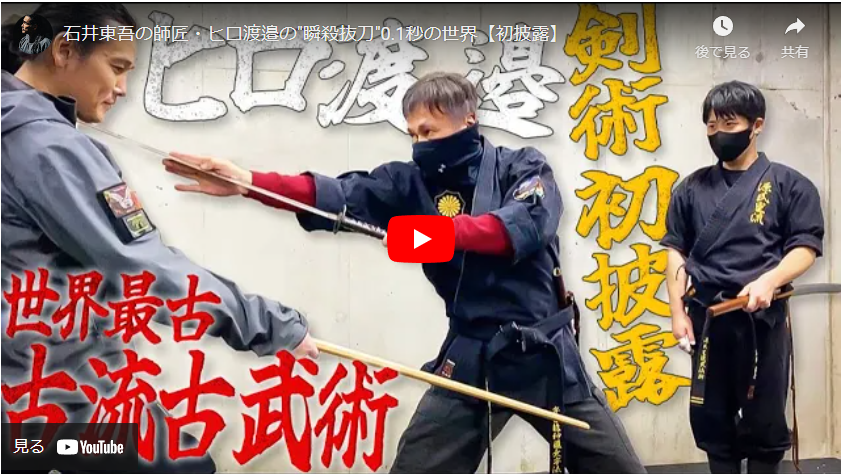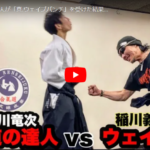↑↑↑↑↑~坂口拓の動画をタップして見る~↑↑↑↑↑
↑↑↑~Tap to watch Taku Sakaguchi’s video~↑↑↑
「抜刀(ばっとう)」は、武道や武術において、刀や剣を鞘から引き抜く行為を指します。日本の武士や戦士たちは、刀を携帯していた際に、敵に対する備えとして刀を鞘から素早く引き抜くことが重要でした。抜刀は戦闘技術の一環として練習されることもあり、抜刀術とも呼ばれます。
抜刀の過程には、正確で迅速な動作が求められます。鞘から刀を引き抜く際に、相手に対する威嚇や攻撃を行うことがあります。抜刀の瞬間は、刀の姿勢や位置、相手との距離などを考慮して選択されます。
日本の歴史的な文脈では、抜刀は武士の身の守りや敵への対処のための重要な技術とされました。また、抜刀の技法は武士道や武道の哲学にも影響を与え、正確さ、速さ、冷静さなどが重視されました。
抜刀術は、日本の伝統的な武道や武術の一部として継承されており、多くの流派やスタイルで教えられています。これらの流派では、抜刀の基本技術から高度な戦術まで、幅広い内容がカバーされています。
Togo Ishii’s master, Hiro Watanabe’s “instant sword drawing” world of 0.1 seconds [premiere]
“Battou” refers to the act of pulling a sword out of its scabbard in martial arts and martial arts. When Japanese samurai and warriors carried a sword, it was important to quickly pull it out of its scabbard in preparation for an enemy. Drawing swords is sometimes practiced as part of combat techniques, and is also called drawing swords. The process of drawing the sword requires precise and rapid movements. When the sword is pulled out of its scabbard, it may threaten or attack the opponent. The moment to draw the sword is selected in consideration of the posture and position of the sword, the distance to the opponent, etc.
In the historical context of Japan, the sword was an important technique for samurai self-defense and dealing with enemies. The technique of drawing swords also influenced Bushido and martial arts philosophies, where accuracy, speed and composure were emphasized. Battōjutsu has been passed down as part of traditional Japanese martial arts and martial arts and is taught in many schools and styles. These schools cover a wide range of content, from basic sword drawing techniques to advanced tactics.



この記事へのコメントはありません。